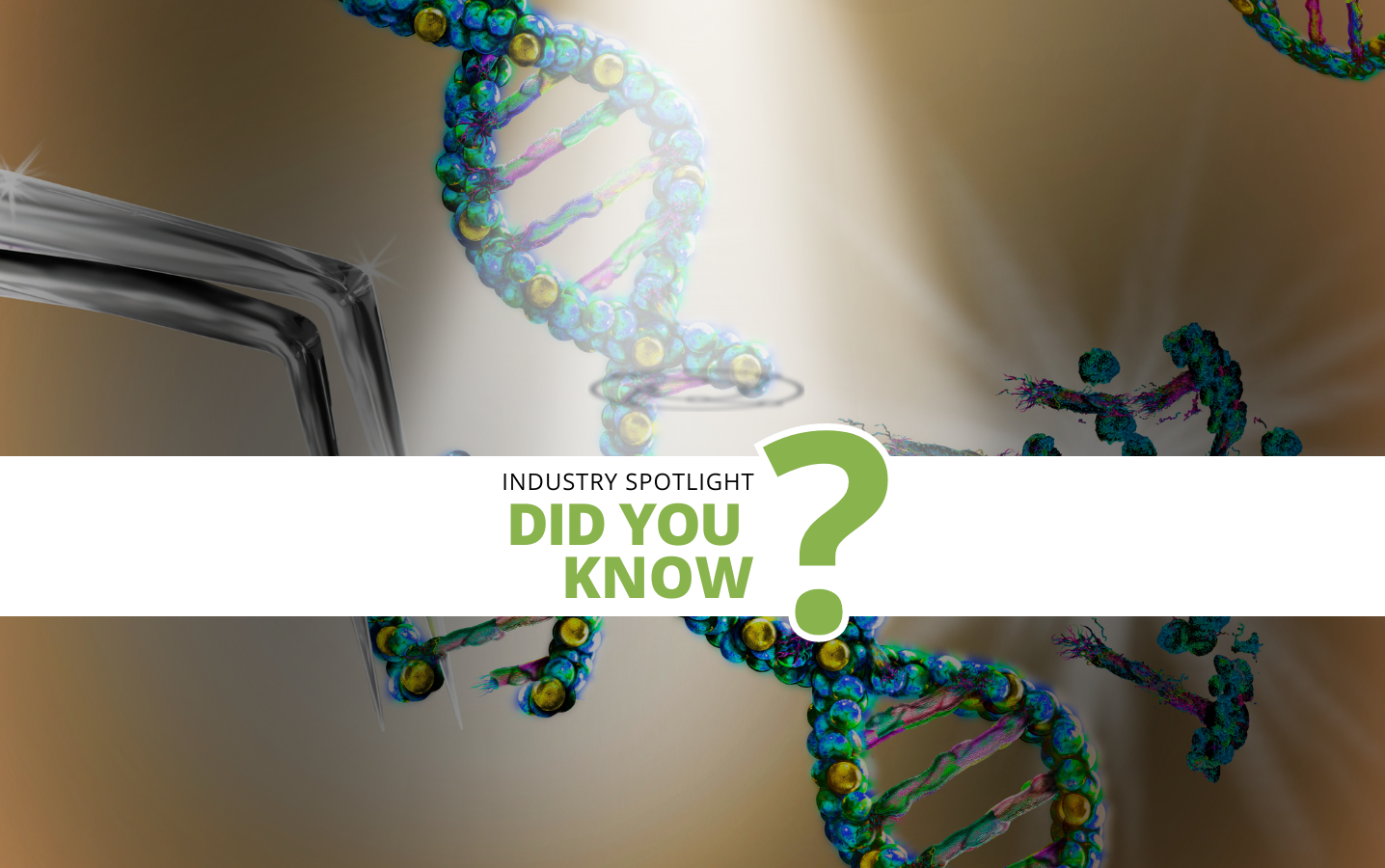Refining Analytics for Gene Delivery Systems

At the heart of analytics for cell and gene therapy is the aim to better understand therapeutic potency and efficacy. By facilitating increased quality control and drug performance, analytic technologies are integral to unlocking the next generation of advanced gene therapies. As such, the demand for analytical technologies is growing exponentially.
In 2021, the global market for analytics services and bioassays was valued at 1.63 billion USD and is expected to rise to 5.64 billion USD in 2030. The steady CAGR of 15.0% during this forecast period can largely be attributed to the continued need for personalised medicine. Other key market drivers include the increasing demand for advanced therapies for cancer and other chronic diseases, the desire for cost-effective treatments, and flourishing government funding initiatives for cell and gene therapy R&D.
So, what are the current trending technologies and modalities for cell and gene engineering? And what are the analytical challenges facing the industry? As part of Oxford Global's Cell Therapy Analytics Symposium 2022 event in March, we sat down with Alan Griffith, Vice President of Research at Purespring Therapeutics and Roland Pach, Global Expert of Cell and Gene Therapy Analytics at Roche, to find out more.
Measuring Anti-Viral Vectors: A Mechanism of Protective Immunity
Anti-viral vectors are a current trending technique employed for gene testing and delivery. The pioneering technology uses a modified version of a virus to deliver genetic instructions to the body's cells. Cells then produce antigens to trigger an immune response. Available analytic techniques for anti-viral vector analysis, such as harnessing hematopoietic stem cells, provide clinicians with the requisites needed to assess the efficacy of modified and target cells. It is also possible to track such cells upon infusion into the patient.
- Inciting Rapid Standardisation in Cell and Gene Therapy Manufacturing
- What are the Foremost Challenges and Opportunities in Viral Vector-Based Gene Therapy
- Find out how to Overcome the Key Challenges of Gene Therapy Commercialisation
One of the technology's key attributes include the fact that each vector integration is unique to a specific cell clone, meaning it is possible to monitor the repopulation and safety of therapies. Within hematopoietic stem cells, it is possible to select and purify populations that are broad-ranging and composed of vastly different biological matter. However, because these cells behave contrastingly in vitro and in vivo, the technology has the potential to confuse and compromise biology.
However, there remain some significant knowledge gaps with analysing anti-viral vectors. It will be necessary to investigate and adopt deep sequencing technologies for safety and long-term efficacy. Such approaches will facilitate an improved understanding of what is contained within the cocktail of cell populations.
Further advances in anti-viral vector analytics will improve model translation to achieve a greater degree of applicability and pharmacovigilance. Whilst mouse models provide a substantial amount of information in functional studies, their genetic similarity to humans remains limited when it comes to accurately mimicking human disease phenotypes. Discovering biomarkers to determine the efficacy of the drug products, as well as the requisites of early and pre-infusion can have a significant impact on the quality and development of anti-viral vectors.
AI-Driven Omics: The Future of Spatial Biology?
Artificial Intelligence (AI) has the ability to interpret and perform data analysis on various types of omics and multi-omics data sets as well as cell phenotypes. For Alan Griffith, Vice President of Research at Purespring Therapeutics, “AI-driven omics platforms are the way forward in the future of cell therapy analytics.” In particular, machine learning algorithms are set to become a divisive tool for the integrative interpretation of complex and ‘big' data to make patient-specific observations.
“AI technology could help in gaining more understanding about disease progression and therapeutic response and the complexities we cannot easily detect with the human eye. Despite the technologies potential to increase analytic capabilities, key considerations remain. The issue of bias is common to AI practice and refers to a lack of fairness expressed in results.
Machine learning algorithms are set to become a divisive tool for the integrative interpretation of complex and ‘big' data to make patient-specific observations.
AI-driven systems are subject to the biases of their maker. As Griffith puts it, “AI and ML tools are only as good as the humans creating them.” Biased analytics creates ongoing and self-fulfilling expectations, where the system's data can reinforce misguided predictions, which, in turn, influences future decisions. Being aware of these potential threats must be a priority when deploying AI solutions. Other preventative measures include implementing a ‘blind taste-test,' which removes decision biases from the primary algorithm.
Identifying the Critical Quality Attributes of Analytical Modalities for Gene Delivery Systems
The control strategy defined by ICH Q10 consists of a planned set of controls, derived from current product and process understanding, that assures process performance and product quality.
The design and implement of a control strategy is using risk management tools .e.g. by linking the cQAs to process capability and detectability. The identification of the adequate critical quality attributes (CQA) is crucial and starts with the defined quality target product profile (QTPP) by applying the quality by design approach (QbD). For the identification of CQAs, the basic principles of assessing the criticality and risk of quality attributes are well established and described in ICH Q9 and also applicable for the new modalities.
Achieving commercialization of the drug candidates, CQAs account for the physical, chemical, and biological properties in a signified distribution, range, and limit to ensure appropriate product quality is an incremental (learning) process based on the increasing product and process knowledge. Roland Pach, Global Expert of Cell and Gene Therapy Analytics at Roche, highlighted how “within the industry and academia, as it is, we have not yet achieved a complete understanding of all relevant CQAs of our in-vivo- and ex-vivo gene products.”
The identification of the adequate critical quality attributes (CQA) is crucial and starts with the defined quality target product profile (QTPP) by applying the quality by design approach (QbD).
Pach continued: “to achieve the compliant format and actively meet regulatory requirements, there are several analytical strategies and protocols that must be developed and followed." Such potential holistic approaches might be “in-line analytics, real-time release testing, Multiplex based methods, Multivariate real-time monitoring”, providing evaluative analysis and validation of in-process and final drug products based on process data and controls. This technique offers an alternative to the burden of release testing by facilitating evaluation that runs in parallel to production instead of having to maintain a testing environment after the fact.
What's Next for Analytical Development for Gene Delivery Systems?
The landscape of gene therapy analytics is witnessing an increasing need to harness potency assays to meet regulatory submission requirements. Implementing potency assays provides further investigative qualitative assessment and extended characterisation processing.
Nevertheless, debate remains regarding the utility of such a method. It is possible that potency testing will become redundant or displaced due to its limited utility. In particular, there remains scepticism surrounding whether the quantitative nature of this complex assay is lacking compared to other more straightforward assays that are proven to be more effective in predicting clinical efficacy.
Final Thoughts
Whether the adoption of potency assays will become fully realised is yet to be determined. Future projections for the advancement of analytic methods for gene engineering and delivery systems is set to include overcoming translational hurdles in 3D models, introducing objective machine learning algorithms into data sets, and optimising efficient CQAs for clinical development.
Want to find out more about the latest cell therapy news? Register now for Oxford Global‘s Cell UK: In-Person event to advance your understanding of cell-based products to ensure clinical and commercial success.







